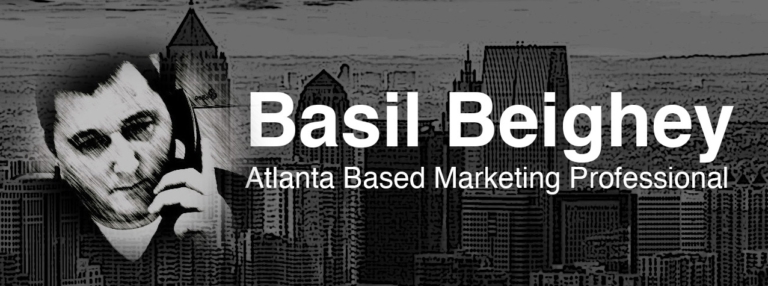At one point in my life, I was a certified golf addict. The urge to hit a golf ball every day was just about uncontrollable. For about a six-year period, I planned my day to day activities, vacations, and social events around practicing or playing golf. I was between marriages and I worked late nights, so arranging to be at Metropolitan Golf Club in Conyers, GA every day between the hours of 1:00 and 4:00 PM wasn’t usually a problem.
Metropolitan Golf Club was a club in distress. For whatever reason, and in spite of the fact that their course was a beautiful, 7000 yard, Robert Trent Jones Jr. design, their membership was drying up. So when they ran a membership special requiring no initiation fee and all the rounds of golf you could walk for $100 per month, I joined immediately and took full advantage of the course and practice area.
My typical daily routine was to eat a late breakfast and run my daily errands, then drive to the club for my daily practice. I usually hit a bucket of balls and practiced my short game for about 30 minutes, then played 9 holes.
Between the weekday hours of 1 and 4 PM, the course was usually empty, save for an occasional corporate foursome. So after teeing off, I usually walked at my own brisk pace from one lie to the next, savoring the beauty and peace of the wide open course.
It’s hard to communicate to the uninitiated, the pure joy and peacefulness of playing golf all alone, on a beautiful course, when walking at your own pace. On beautiful Georgia afternoons, it was like dying and going to golf heaven. As I walked to my ball, I’d often think, “This is the way this sport is supposed to be played” – not from a motorized cart, but on foot, walking at a brisk pace. It is on one such afternoon that this story begins.
Number one hole at “Metro” was a “dog leg” left par five of about 570 yards measured from the pro tees or “tips.” As usual, I finished my practice and casually walked up on the tee box to start my round. Before teeing off, I quietly stood and looked into the distance in all directions to survey how many other players were on the course. As usual, as far as I could see, no human form graced any fairway, driving range, or practice green. Beautiful, I secretly thought.
I teed up my ball, visually surveyed the fairway, and hit a relatively good drive, long and down the right side – the perfect location for my second shot. I then picked up my small carrying bag and briskly walked toward my lie.
The number one green at Metro was raised and surrounded by trouble – woods on the left, sand in the front, and water on the right; so for me, swinging for the green on the second shot was out of the question. I’d done it before and always regretted it. I was content to simply hit the shot I’d hit successfully so many times before – a 175 yard, five iron “lay-up,” to the left side of the fairway, about 125 yards from the pin. Whoosh, smack, perfect.
The left side of the fairway at the 125-yard mark, provided a great view of the green and the best “approach.” I pulled my nine iron from my bag and hit a good approach shot to within fifteen feet of the hole.
As I arrived at the green, I pulled out my putter, set my bag down, and immediately began surveying the green to determine the “line” of my birdie putt. So far I had played the hole perfectly and making this put would really set up a great round. As I focused on my line and prepared to hit my putt, something in the periphery caught my eye. I looked up to see a slim, tall, smartly dressed, black, male, leaning on his club, about 200 yards away in the middle of the number one fairway. I recognized his body language as slight impatience – he was going to swing for the green on his second shot and was waiting for me to finish.
“That’s odd,” I thought. There was no one on the practice tee or practice green when I hit my tee shot. I played my first three shots quickly; … where had he come from? He must have walked from his car straight to the first tee! “Wow, … what a great drive that was,” I thought.
I knew that tee shot well and concluded he must have “flown” the corner of the woods (a dangerous shot) to arrive at that location on his tee shot. Furthermore, he had hit it “cold” – no warm-up, … he came straight from his car to the first tee! I stood staring at the lone figure in the middle of the fairway in awe.
Realizing that he must be a faster player than myself, and not wanting to hurry my round or rush my birdie putt, I quickly marked my ball and waved him to make his approach shot. As I walked off the green I saw his perfect swing and heard a loud smack! His ball soared high into the air and landed splat! – inside of my mark! This guy, who had so casually started his round without any warm up, was now putting for eagle (two under par) on the first hole!
I was filled with curious anticipation as I watched him approach the green. “Who was this guy?” I knew most of the “big hitting” members; I surmised that he must be a guest.
As he approached, he looked up at me standing on the tiered green. I could see the beads of sweat on his forehead as he said: “Thanks mon.” I immediately noticed his Caribbean Island accent and my curiosity intensified.
I introduced myself, exclaiming something like: “That was a hell of a golf shot!”, and asked where he was from. Sure enough, he said his name was Sebert Walker and mentioned that he was a club pro at a resort in Jamaica. He said he had come to “Metro” to play in the BellSouth* Qualifier the following Saturday – a PGA Tour event. In preparation for the qualifier, he was going to play a few practice rounds to familiarize himself with the course. If he qualified, he’d play in the event. If he didn’t qualify, there was a second tier, Nike Tour event the same week that he had already been invited to participate in.
Wow, I thought, … the BellSouth! The Bell South golf tournament was a pretty big PGA event in those days. It attracted many top level pros because it was played in Atlanta the week before the Masters. Because of Atlanta’s close proximity to Augusta (home of the Masters), it was considered a perfect “tune-up” for that “major” PGA event.
After talking for a minute or two, we finished the hole (he missed his eagle, but made his birdie, I missed my birdie, but made par). As we walked to number two I asked if he wanted to “play through.” He communicated that he would rather play along with someone that knew the course well, and if I didn’t mind, he would just play along with me.
Playing with a pro is a real treat for an aspiring amateur and I think my heart skipped a beat when he suggested “playing along.” Just watching a pro hit the ball is inspirational. You notice things that just don’t show up on TV, like their concentration, their focus, their meticulous attention to detail, and the effortlessness of their swing.
What followed was one of the most enjoyable rounds I ever played at Metro. Sebert’s swing was a thing of beauty, his mechanics were perfect, and his friendly but focused demeanor melded perfectly with my own. He hit his Titleist 100, balata ball so true it made a smacking sound like a mallet hitting a super ball. He hit his iron shots high into the air with so much backspin that they seemed to float like a frisbee. He hit his putts so true that he literally flirted with birdies on every hole.
By the time we reached number eight, we were friends, he was already two strokes under, and I remember thinking that there was nothing this guy couldn’t do with a golf club.
Number eight hole was the number 18 ranked handicap hole at Metro – that is to say, if someone spotted you a 17 stroke advantage, number 8 was the only hole you would play “straight up,” with no stroke advantage. It was short (350 yards from the championship tees), it had a wide fairway, and it had no dangerous obstacles. The green was huge and very gently sloped toward the tee box offering a perfect approach view. Compared with the other 17 holes at Metro, number 8 was supposed to be easy.
As we surveyed the tee shot, I said offhandedly, “This is the easiest hole on the course; you should birdie it easily.”
At my remark, Sebert turned and looked at me sternly. I felt a little uneasy as he held his stare for a couple of seconds and softly said: “Never say that mon; there is no such thing as an easy hole in golf.”
I can’t tell you how many times those words have run through my mind over the years. Here was the best golfer I had ever played with, playing the easiest hole on the course, glaring at me as if I’d cursed him and reprimanding me for something I should have known. Sebert’s remark made such an impression on me, that over the years I’ve extended it to: “There is no such thing as easy in absolute terms” – the word easy is always used in the relative sense. Some tasks are “easier” than others, but you always have to perform to a certain threshold of competence in order to accomplish any goal – whether that goal is tying your shoes or driving a golf ball.
As I watched Sebert play the rest of his round I further realized the magnitude of those words. He hit some shots with great power, he hit some shots with a feather touch, but whatever shot the situation demanded, he always, … always, focused with the same intensity – he seemed to use just as much mental energy striking drives as he did striking putts. Each shot was given the same level of respect and effort.
I once heard Joe Paterno, coach of the Penn State Nittany Lion Football Team, quote the philosopher Virgil saying: “To live is to suffer.” I’m not sure what Virgil meant, but the older I get, the harder it is just to breathe and keep my blood pumping. Getting up in the morning isn’t easy, bending over to tie my shoes isn’t easy, going to work isn’t easy, and creating anything of value or beauty is never easy.
But knowing that “easy” doesn’t exist can make the journey peaceful and ultimately more satisfying. If you know and accept that everything you do is going to take your full attention and effort and then surrender to that knowledge, the results you achieve can be profound and lead to what Zen monks call a satori, or “sudden enlightenment.”
I can’t tell you how many times I’ve caught myself not doing well or achieving poor results only to realize after self-examination that I was simply not surrendering to the acknowledgment that nothing is easy. That is to say, to achieve your best results, and ultimately inner peace, maximum attention must be focused on the here and now every second of the day.
Tennis great Brad Gilbert wrote in his book, “Winning Ugly,” that whenever he walked on the tennis court to play a match, he first “packed his lunch.” That is to say, he resolved in his mind that he was in for a long, hard, fight – no matter who he was playing. Surrendering to that knowledge enables your mind to deal with the mental pain, or suffering when it ultimately comes. Preparing for that pain in advance leads to peace and affords you your best chance to achieve the results you want.
Tasks that seem “easy,” like number eight at Metro or brushing your teeth, offer the biggest challenges to your inner peace as they seductively offer you an opportunity to lose focus, to daydream, to divide your attention between what is in front of you and some other phantom, mental place. And dividing your attention always leads to results that are less than optimum and inner conflict that leads to mental pain instead of peace.
Sebert and I became good friends and went on to play two more rounds that week. As the weekend approached, he casually asked me to caddy for him in the qualifier on Saturday morning. As payment, he said that if we qualified, he would let me caddie for him in the BellSouth Classic.
So how did we do in the qualifier? He finished one stroke under on the front nine, and one over on the back to finish at even par. Only two other players out of a field of over one hundred finished stronger. One gentleman in our foursome and another gentleman elsewhere finished two under par. Unfortunately for Sebert and myself, the BellSouth Classic* was only accepting two qualifiers out of the entire field and we finished third. Such is life.
*Later renamed the AT&T Classic





